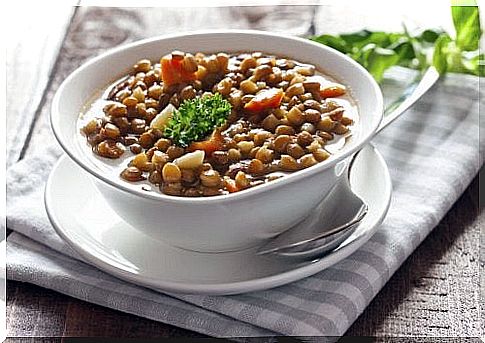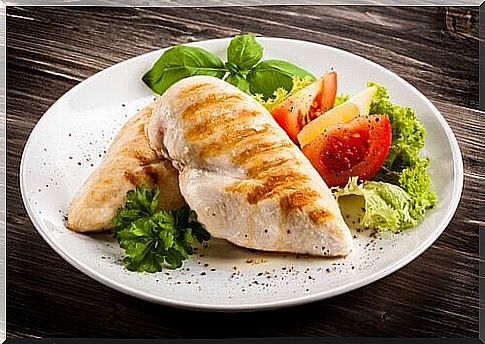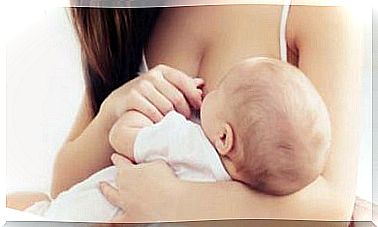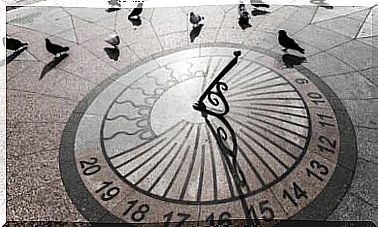What Should A Postpartum Diet Look Like?

After giving birth, many women would like to have the same figure they had before pregnancy. However, they think that this is not possible and they soon seek a postpartum diet. We’ll tell you everything you need to know about her.
First of all, we have some very good news. After giving birth, you will lose around 6 to 7 pounds.
You may wonder “How did I lose all those pounds?” Well then, 3 or 4 kilos are the baby itself, about a kilo corresponds to the placenta, a kilo and a half to the uterus, and finally, about 2 liters of amniotic fluid are removed.
Foods allowed in the postpartum diet
The foods you should consume at this stage of your life are those that provide multiple vitamins and minerals. Among these are:
Magnesium-rich foods
Deficiency of magnesium in the body causes weakness and fatigue. Thus, foods rich in magnesium that you can consume are: asparagus, pumpkin or sunflower seeds, spinach and nuts.
Foods rich in folic acid
To keep your stores in optimal condition, you need to include foods high in folic acid in your postpartum diet.
Among them are: beans, broccoli, lettuce, walnuts or almonds, bananas, oranges, papaya, grapes and strawberries.
food with iron
Do you remember that during pregnancy you ate a lot of iron-rich foods? Surely you did this in order to avoid anemia.
In fact, you also need to boost this mineral after giving birth. So, you should introduce iron rich foods. Among these are: red meat, watercress, chard, peas, oats, rice, bread, chickpeas and lentils.

Foods with calcium
In order to avoid demineralization and aid in milk production, it is necessary to consume dairy products, such as milk, not very matured cheeses, low-fat yogurt and sauces and creams made with milk and béchamel.
Postpartum diet menu
To facilitate eating during this period, here are two examples:
first menu
- Breakfast: two slices of bread with jam, a glass of skim milk or a portion of cereal with milk.
- Morning snack: a portion of fruit and two slices of turkey breast.
- Lunch: a soup and a portion of mashed potatoes or pumpkin. You can also eat a portion of lean meat or fish and a portion of fruit.
- Afternoon snack: a serving of fruit salad.
- Dinner: a fruit and a portion of chicken with a baked potato or a plate of vegetable soup.
second menu
- Breakfast: a glass of skim milk, a portion of cereal, an orange juice.
- Morning snack: two slices of wholegrain bread with jam and low-fat yogurt.
- Lunch: a serving of lean meat or fish with a serving of rice or wholegrain pasta. Another option would be a salad with assorted vegetables or sautéed vegetables with a little olive oil. For dessert, a low-fat yogurt or a portion of fruit.
- Afternoon snack: wholegrain cookies and a fruit.
- Dinner: a vegetable broth or an omelet with vegetables and shredded chicken or tuna. As a dessert, it can be a fruit or a low-fat yogurt.
- Before going to bed: a portion of cereal and a glass of skim milk.
Advice when following a postpartum diet
In order to ensure the effectiveness of the postpartum diet – which, by the way, should be prepared by your trusted nutritionist – the following tips need to be taken into account:
- Include five servings of fruits and vegetables a day in your diet. These foods will provide your body with vitamins, minerals and antioxidants.
- Spread out meals in five throughout the day: breakfast, morning snack, lunch, afternoon snack and dinner.
- Don’t skip meals.
- Drink plenty of water, approximately 2 liters.
- Reduce your consumption of sugar like chocolate, sweets, cookies and cakes.
- Avoid drinks with a lot of sugar.
- Consume white meat without the skin.

- Try to incorporate fish daily into your diet as it is a rich source of protein.
- Exercise every day, the most practical is walking. This will help you lose weight and give you more energy to take care of your baby.
- Limit foods that are high in fat, especially those with saturated fat like red meat and sausages. The same goes for fats that are added to foods such as fried foods, sauces, butters and oils.
- Always consume low-fat dairy products to reduce your fat intake.
- Reduce your intake of sodium such as salt or canned foods.
- Avoid caffeine, alcoholic beverages and soft drinks.
- You can take a vitamin and mineral supplement
In short, the postpartum diet guarantees a very balanced healthy diet. For everything we’ve mentioned before, by following her you’ll be taking care of yourself and your baby.









